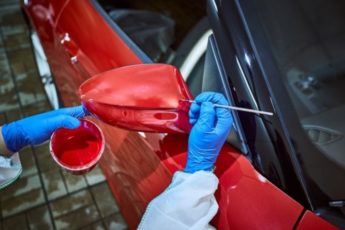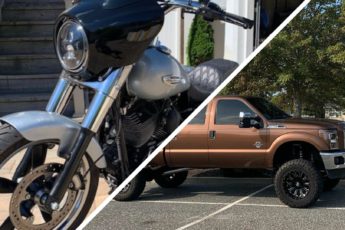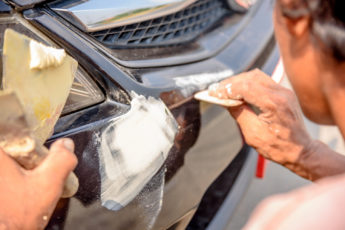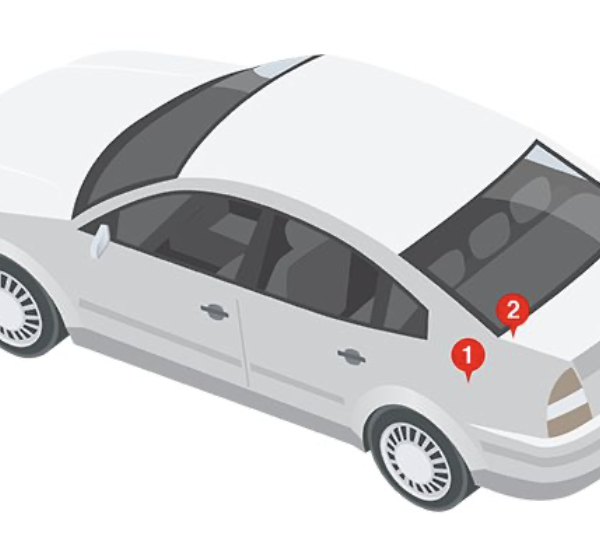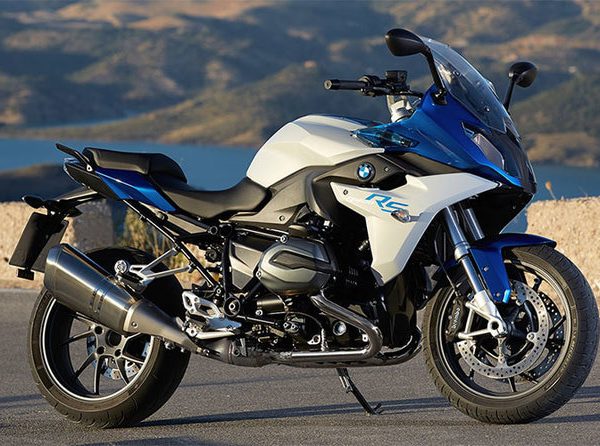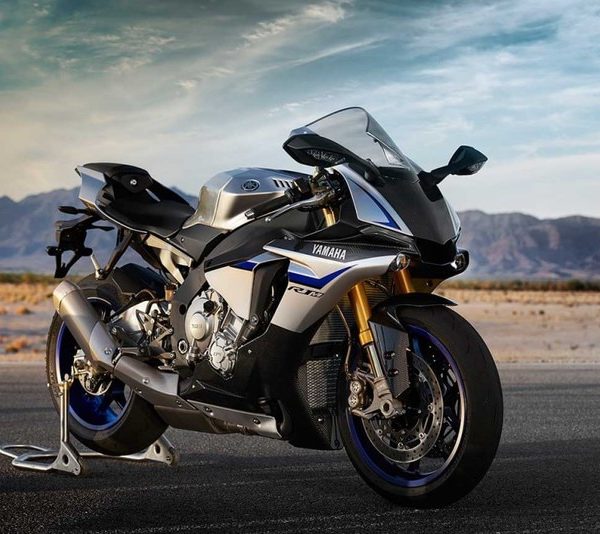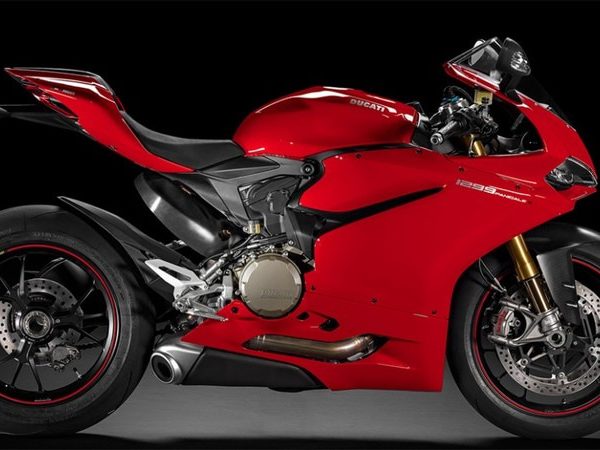Economical Tips for Maintaining Vehicle Appearance
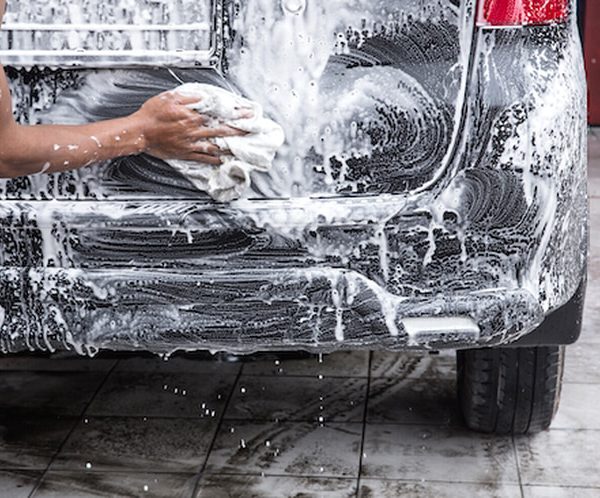
It goes far beyond making a positive first impression. Keeping your car or motorcycle looking great is one of the best ways to protect your investment and keep it in great shape for years to come. Best of all, making these strategies a part of your vehicle-care routine won’t break the bank and will save you on costly repairs in the long run.
Pay Attention to the Interior and Seating
We all know people who spend hours lovingly maintaining the outside of their vehicle. They wash it, wax it and painstakingly detail it. Meanwhile, the inside looks like a tornado hit. Attending to your car’s interior is just as important.
Regular vacuuming is one of your best weapons, protecting your carpets from dirt and sand that can cut into the fibers. Vacuum floors, upholstery, the mats and under the seat. Get into crevices with an attachment to catch dirt and crumbs.
Wash your car’s mats with soap and water. Don’t put them back into your vehicle until they are totally dry.
Clean the inside glass with a non-ammonia glass cleaner and paper towels. Dry with newspaper to get a streak-free finish.
To keep stains on your carpet or upholstery from becoming permanent, treat them as soon as possible with a carpet or upholstery cleaner designated for that purpose. If your seats are vinyl, the surface can usually be cleaned with mild soap and water. Avoid using a protectant solution on vinyl as it makes the surface too slippery. For leather surfaces, clean with saddle soap. Afterwards, apply a conditioner to keep the material supple and new-looking.
For hard surfaces such as your dashboard, use the mildest cleaner you can find. Also consider applying a low-gloss protectant to shield these areas from damaging UV rays. Steer clear of high-gloss solutions as they can be too distracting. Avoid putting any protectant on your steering wheel, brake or gas pedals because they can make the surface too slick for safe driving.
Exterior Care
One of the cheapest and least complicated things you can do to ensure that your vehicle looks its best is to keep it clean. But while it isn’t that difficult of a concept to grasp, washing your motorcycle or car involves more than slapping soap on your vehicle and rinsing it off.
Following these basic rules of car-washing can bring about optimal results:
- Don’t wash your car or motorcyle when its body is hot or right after it has been in direct sunlight. Too much heat brings on faster evaporation of soap and water and leads to unsightly streaks and water spots.
- When washing a car, use lengthwise motions across the body panels, not little circles. The latter can result in small but noticeable scratches to your paint.
- For motorcycle users, plug your exhaust hole with a rag or rubber glove to prevent water from getting in.
- Before you begin, rinse the entire vehicle to remove dirt and particles. Then go section by section, washing and rinsing thoroughly before moving on. Start at your vehicle’s top and work your way around.
- Use a hose without a nozzle, letting the water flow downward from your car’s top to reduce pooling of moisture.
- Lather your solution into lots of suds that will lubricate the painted surface. Use a product specifically intended for cleaning motorcycles or vehicles.
- Use a lamb’s wool mitt or a sponge.
- Look along the wheel wells and under the body to locate areas where grease and road-tar deposits often exist. They can be removed with a dedicated bug-and-tar remover.
- Using a different sponge, clean the tires and wheels; you can usually use mild soap. If you need a more powerful cleaner, choose one that is designated to be safe for all types of wheels.
Even the most thorough wash can be in vain if you don’t dry your vehicle properly. Air-drying or driving around the block a few times just isn’t going to cut it and will lead to ugly water spots. It’s also a bad idea to use abrasive towels since they can cause scratches. Instead, employ a soft chamois or terrycloth towel to dab the water off the surfaces. If you want to accelerate the process, apply a soft squeegee to your vehicle’s body.
Contrary to what is best for cars, motorcycles can actually be dried with a blower of some type, including a snow or leaf blower or a shop vac on reverse.
Washing is only the beginning. Waxing is also a crucial part of a comprehensive car- or motorcycle-care routine. It is a myth that today’s auto finishes do not need to be protected by regular waxing. The rays of the sun as well as road grime will take their toll unless a protective coat of high-quality carnauba wax is applied at least twice a year, more often if you live in harsh climates where your vehicle is exposed to road salt. Follow these guidelines to give your vehicle the extra protection it deserves:
- After you have thoroughly washed and dried your vehicle, apply a pre-wax cleaner. This product is designed to remove bug remains, water spots and any remaining wax from your last job as well as to deep clean the paint. Be sure to read and follow the manufacturer’s directions.
- Using a damp cloth or the applicator that came with the wax, apply it to your vehicle one panel at a time according to the manufacturer’s instructions. The wax will be dry in a few minutes, after which you should use a soft towel to buff it.
- While one coat is usually sufficient, you can apply a second if you want an even glossier shine. Just be sure that you allow for enough curing time between coats, usually anywhere from 12 to 48 hours.
Once a year, invest in professional detailing. At the shop, your car or motorcycle’s finish will be thoroughly cleaned. In addition, light scratches will be removed with an orbital machine. Finally, the entire surface will be buffed to a brilliant shine.
Whenever possible, keep your car or motorcycle out of the elements. This can be either in a garage, carport or parking structure, or you can purchase a fabric car cover to protect your vehicle.
Keep a watchful eye on your paint job. Leaving irritants such as sap, road salt, bug splatter or tar on its surfaces can corrode your paint over time and be harder to remove as days go by.
Remove dents by flattening them out with a DIY kit. These can usually be purchased for around $20 and provide an affordable way to reduce or eliminate the appearance of minor dings.
Fill in scratches. Buy car or motorcycle touch up paint and use it to cover minor chips or scratches. Generally, this type of paint dries quickly. After a couple of days, add some shine to your newly-painted area with a microfiber cloth.
You spend a lot of time in your car or on your motorcycle. Keeping it looking as close to new as possible doesn’t just send a positive message and impression to those around you. Giving your car or bike some regular tender loving care really will extend its life. In fact, it’s one of the best ways you can find to make the most of your investment.

 Cart
Cart
 Help Desk
Help Desk
